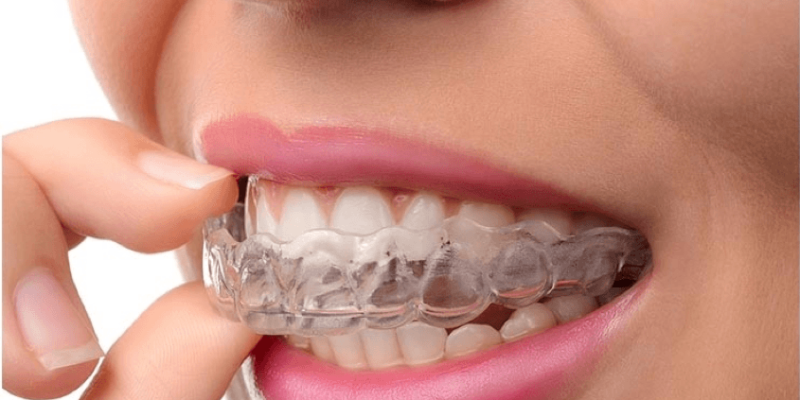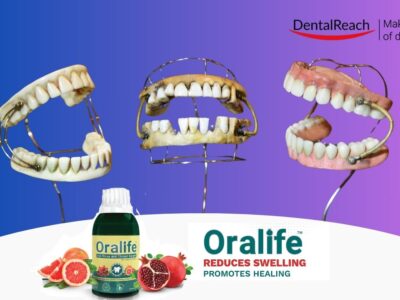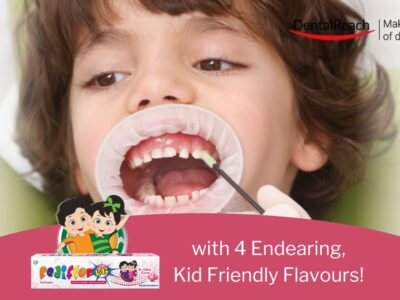-Dr Akash Kumar Raj
Dental braces are used to align and straighten teeth, and hold them in position irrespective of person’s bite and oral orientation. Braces are used to correct malocclusion, overbite, underbite, deepbite and crossbite.
Invisible braces/clear aligners: The crazy trend

A clear aligner is not more effective than conventional braces: but yes quite esthetic than any other form of braces. Clear aligner has undergone many changes, since more than 18 years, to increase its effectiveness. Due to considerable interest among the adult population for orthodontic treatment, clear aligner or invisible braces have gained huge amount of popularity. Invisalign® or clear aligner is the new age orthodontic treatment especially designed for adults – keeping in mind those who are very conscious about their appearance.
- It is effective for moderate crowding of the front teeth mild to moderate crowding (1-6mm)
- They are also indicated for the patients who have experienced relapse after fixed orthodontic treatment.
- It is never recommended to children.

History
Align technology 1997 released the Invisalign® system. The company used computer aided design (CAD) and computer aided manufacture (CAM) to produce this type of orthodontic appliance. During its initial days, clear aligners were used for treatment of simple tooth movement. As technology developed, the manufactures did certain modifications and attachments for different type of complex tooth movements. With time, clear aligners become a prominent alternative for fixed orthodontic appliances. The technology which allows for multiple tooth movements from a single impression is now known.
What is a clear aligner, commonly referred to as Invisalign® ?
The Invisalign® appliance involves a series of aligners made from a transparent, thin (typically less than 1mm) plastic material formed from CADCAM technique. These aligners are similar to splints that covers the covers the clinical crown and the marginal gingiva. Each aligner is designed in such a way that it provides movement of maximum 0.25 to 0.3 mm over a 2-week period. The Invisalign® appliance is recommended for adults and for adolescents with fully erupted permanent teeth who meet an acceptable standard of compliance. Excellent compliance is mandatory since the appliance has to be worn for a maximum of 20-22 hours a day and removed only while eating.

Current technique of orthodontic appliance
Fixed orthodontic appliances have been the backbone of the orthodontic biomechanical technique. However, the reluctance to wear buccal braces because of their poor esthetics has been a driving force for the development of alternative treatment options for the adult population. Some current treatment options include:
- Essix retainers
- Turtain retainer
- Lingual orthodontics
- Clear aligners.

Clinical application of Clear Aligner therapy
Treatment begins with taking x-ray and photographs for diagnostic purposes, followed by capturing the patients bite, teeth and gums via a bite registration and polyvinyl siloxane impressions or an intraoral digital scanner.

The impression is scanned in order to create a digital 3D representation of teeth. A computer graphic representation of the projected teeth movements is manufactured. The aligners are modelled using CAD-CAM technique and produced using a rapid prototyping technique called stereolithography. The aligners are made from an elastic thermoplastic material that applies pressure to the teeth to move into the aligners position.
Since the form fitted plastic used in clear aligner is not as rigid as the metal used in the traditional braces, sometimes the flexibility in the materials needs to be compensated in areas that require movements. Sometimes modifications and attachments are done to facilitate tooth movement, which can make the aligner less esthetically pleasing.
Patient compliance
Since the clear aligner is removable, patient motivation is necessary for achieving the desired result for the appliance to be effective. Patient must wear it according to the clinician’s advice.
- Each aligner is intended to be worn for an optimal time of the 20-22 hours a day.
- Average treatment period varies form 12-14 months, although the treatment time varies based on the complexity of the planned teeth movements.
- Aligners are only removed for brushing, flossing and eating.
- While undergoing treatment, hot liquid should be avoided to protect the shape of the aligners and from becoming stained.
- Once the treatment period is over, the patient is advised to continue wearing a retainer at night for a foreseeable future.
Extraction cases
Patient having premolars extracted may not be the ideal case for using clear aligners, because this appliance cannot keep teeth upright during space closure. It is found that only 29% of those with 1 or more premolar extracted were able to achieve space closure with initial aligners, none completed the overall treatment. Since clear aligners provide movement of 0.25-0.3 mm, it is not sufficient in extraction cases.
Teeth movement
As it is removable appliance, the clear aligners have limited control over precise tooth movement. Inconsistently successful corrections have been:
- root paralleling during space closure after extraction
- tooth up righting
- significant tooth rotations
- tooth extrusion
Efficiency of Clear Aligner therapy
Many studies were conducted to assess the efficacy of clear aligner therapy. Within certain limitations (e.g. small sample size, bias, lack of binding etc.), it was concluded that clear aligner therapy was effective in
- aligning and levelling dental arches and
- anterior intrusion with molar bodily movement (distalization of 1.5 mm).
However, this therapy was not effective in
- anterior extrusion movement or
- for controlling rotated teeth.
To improve tooth movement, auxiliaries such as attachments, interdental elastics and interproximal reduction (IPR) should be used along with the clear aligner therapy. Another systemic review was conducted which showed that a clear aligner is able to alter intercanine, interpremolar and intermolar width in the presence of crowding. Moreover, incisors tend to procline and protrude when crowding is >6mm. Vertical movements and de-rotations are difficult movements to accomplish with aligner, and interproximal reduction is recommended especially in canines.

Indications and contraindications
- Invisalign® appliance is most successful for treating mildly misaligned malocclusion (1 to 5 mm of crowding and spacing) and deep overbite problems.
- Clear aligner therapy is indicated to be used in adults/adolescents with fully erupted permanent teeth.

Conditions that can be difficult to treat with an Invisalign® appliance or contraindicated include:
- Crowding or spacing over 5mm.
- Centric relation and centric occlusion discrepancies.
- Severely rotated teeth.
- Open bite (anterior or posterior) that need to be closed.
- Extrusion of teeth.
- Severely tipped teeth.
- Teeth with short clinical crown.
- Arches with multiple missing teeth.
Conclusion
Clear aligner therapy has improved over the last 18 years and is still being improved. In developed countries like USA, Invisalign® is widely acceptable but in developing countries such as India sometimes cost of aligner could be a major concern in large number of populations. If patients, especially adults, seek therapy, the clinician should offer clear aligner therapy and be clear about its advantages and disadvantages.
References
- Rosvall MD, Fields HW, Ziuchkovski J, Rosenstiel SF, Johnston WM. Attractiveness, acceptability, and value of orthodontic appliances. Am J Orthod Dentofacial Orthop 2009;135:276-7.
- Rossini G, Parrini S, Castroflorio T, Deregibus A, Debernardi CL. Efficacy of clear aligners in controlling orthodontic tooth movement: A systematic review. Angle Orthod 2015;85:881-9.
- Kesling HD. Coordinating the predetermined pattern and tooth positioner with conventional treatment. Am J Orthod Oral Surg 1946;32:285-93.
- Ponitz RJ. Invisible retainers. Am J Orthod 1971;59:266-72.
- Sheridan JJ, LeDoux W, McMinn R. Essix retainers: Fabrication and supervision for permanent retention. J Clin Orthod 1993;27:37-45.
- Hajeer MY, Millett DT, Ayoub AF, Siebert JP. Applications of 3D imaging in orthodontics: part II. J Orthod 2004;31:154-62.
- Hennessy J, Al-Awadhi EA. Clear aligners generations and orthodontic tooth movement. J Orthod 2016;43:68-76.




















Comments